Articles > Geography
Know Greece Largest Cities? Here are the top 25 to get you started.
1. Athens (Population: 3,146,164)
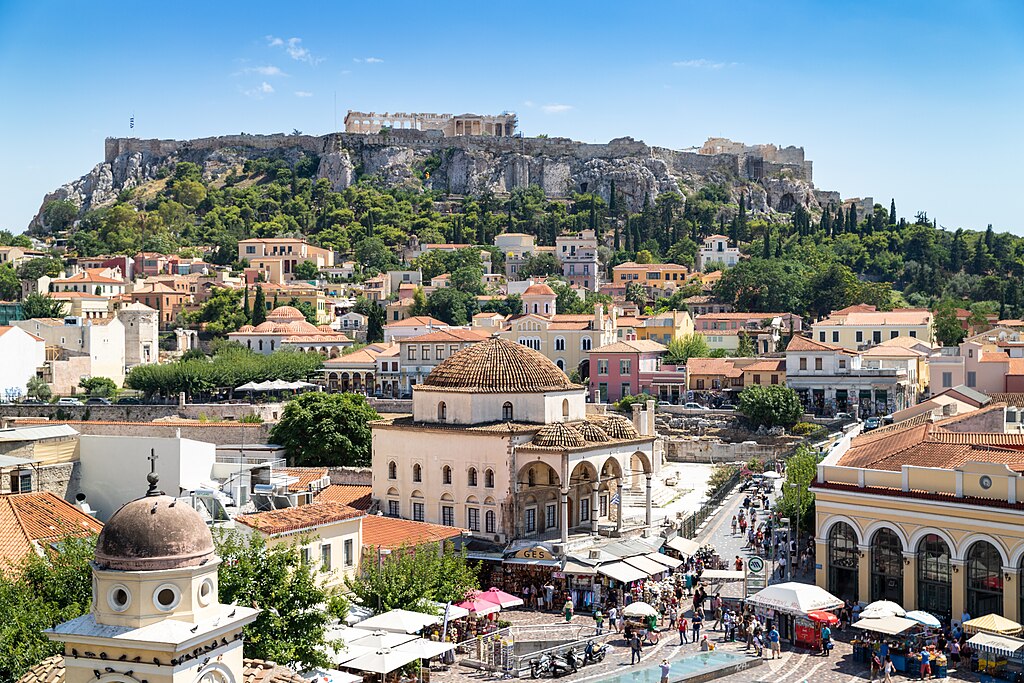
Athens, the capital and largest city of Greece, is a bustling metropolis that blends ancient history with modern energy. Known as the cradle of democracy and philosophy, it is home to landmarks such as the Acropolis, Parthenon, and Ancient Agora. The city’s archaeological treasures are complemented by vibrant neighborhoods like Plaka and Monastiraki, filled with cafes, tavernas, and markets. Athens also hosts world-class museums, including the National Archaeological Museum and the Acropolis Museum, showcasing artifacts from Greece’s golden age. Beyond its historic core, Athens thrives as a cultural and economic hub, with theaters, music venues, and a lively nightlife. Its port, Piraeus, remains one of Europe’s busiest, linking the mainland to Greece’s islands. The city combines timeless ruins with the buzz of modern life, offering visitors a unique journey through centuries of history and innovation.
Interesting Fact:
Athens has more theaters than any other city in the world.
2. Thessaloniki (Population: 802,392)

Thessaloniki, Greece’s second-largest city, is a vibrant port city on the Aegean Sea with a history shaped by Romans, Byzantines, and Ottomans. Known for its cosmopolitan energy, the city is home to the iconic White Tower, the Rotunda, and numerous Byzantine churches listed as UNESCO World Heritage Sites. Its seaside promenade is one of the longest in Europe, lined with cafes and restaurants that give the city its famous laid-back atmosphere. The International Film Festival and a thriving music scene mark Thessaloniki as a cultural powerhouse. With Aristotle University fueling a youthful energy, the city buzzes with student life, nightlife, and creativity. Thessaloniki’s gastronomy also stands out, blending Greek, Balkan, and Ottoman influences into a rich culinary tradition. A city of contrasts, Thessaloniki perfectly balances its ancient past with its dynamic present, making it one of Greece’s most captivating destinations.
Interesting Fact:
Thessaloniki’s UNESCO-listed Byzantine walls once stretched nearly 8 kilometers around the city.
3. Patras (Population: 169,886)
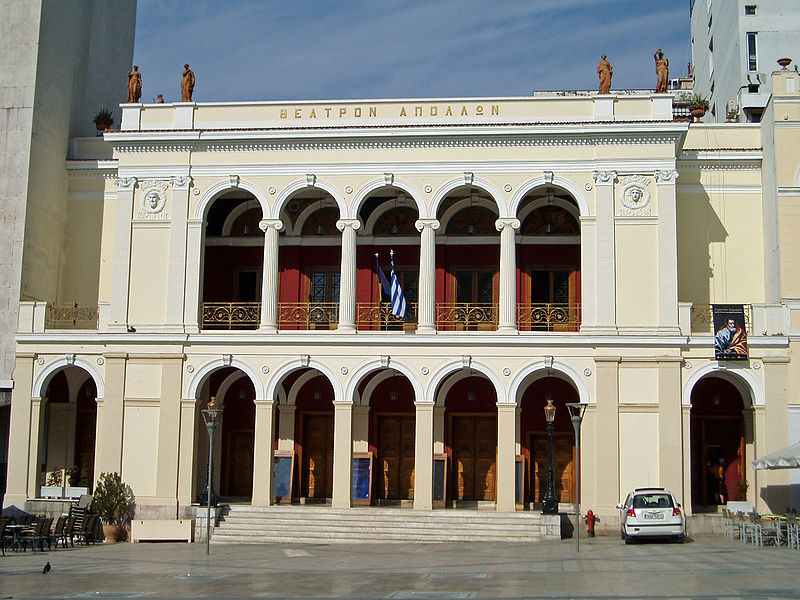
Patras, located in western Greece, is the country’s third-largest city and a bustling port that connects Greece to Italy and beyond. Known as the gateway to Western Europe, it thrives on trade and shipping while also being a center for education with the University of Patras. The city boasts historic landmarks like the Roman Odeon, Patras Castle, and the impressive church of Saint Andrew. Patras is perhaps most famous for its carnival, one of Europe’s largest, which fills the city with parades, costumes, and music each year. Its coastal location also provides beautiful seaside promenades and modern infrastructure such as the Rio-Antirrio Bridge. Patras combines a rich cultural heritage with a youthful energy, blending its ancient history with modern creativity. The city’s role as a transport hub and cultural capital ensures its ongoing significance within Greece.
Interesting Fact:
The Patras Carnival has been celebrated for over 180 years, attracting thousands of visitors annually.
4. Larissa (Population: 146,374)
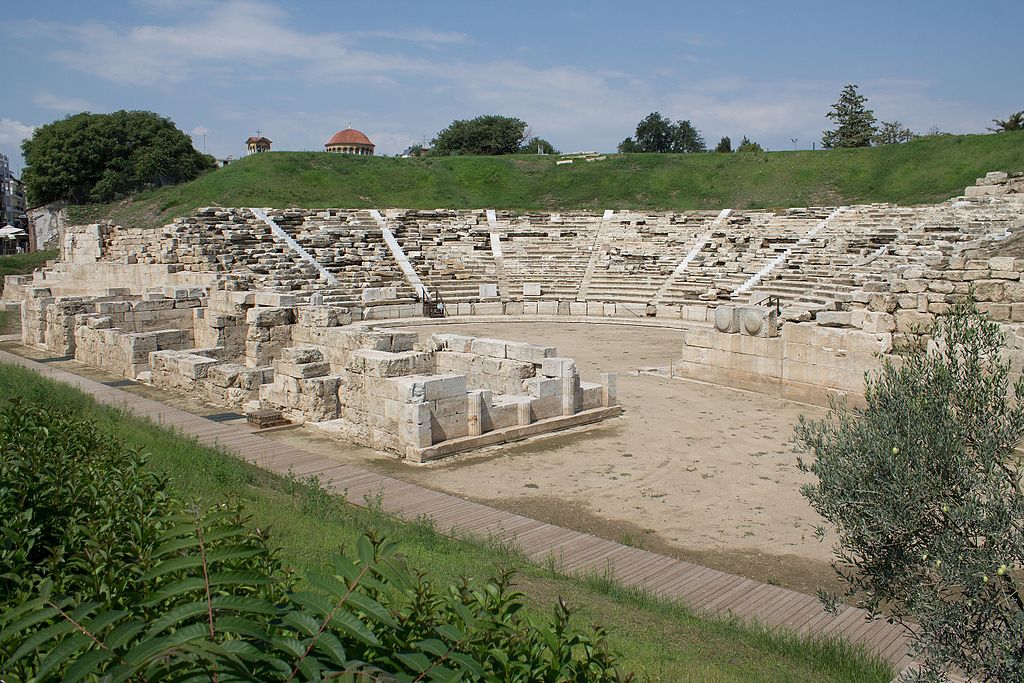
Larissa, located in the fertile Thessalian plain, is one of Greece’s oldest continuously inhabited cities, with history stretching back over 8,000 years. Ancient theaters, including the First Ancient Theatre of Larissa, sit in the city center as reminders of its classical past. Today, Larissa serves as a dynamic hub of commerce, agriculture, and education, with a lively student population giving it a youthful spirit. Known for its countless cafes, Larissa is often called the “coffee capital of Greece.” Modern cultural life thrives with museums, theaters, and festivals, while nearby natural sites like Mount Olympus and Meteora are within easy reach. The city offers a mix of historic charm, modern conveniences, and a welcoming community spirit that makes it an attractive destination for both residents and visitors.
Interesting Fact:
Larissa’s ancient theater could seat more than 10,000 people and lies in the city center.
5. Heraklion (Population: 145,439)
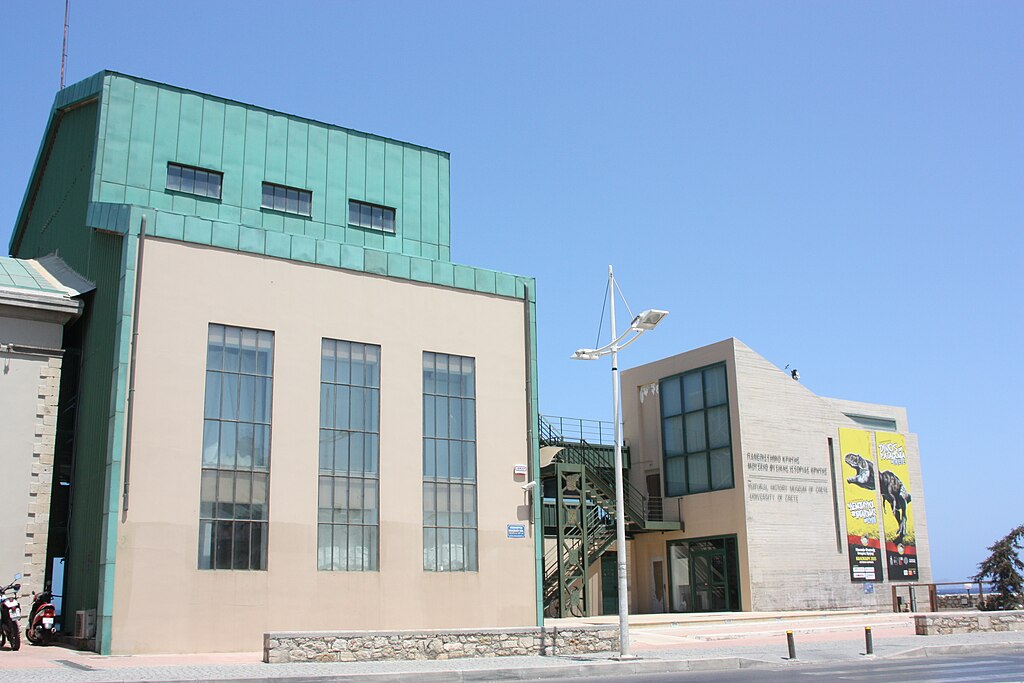
Heraklion, the capital of Crete, blends a deep Minoan heritage with a bustling modern identity. Just outside the city lies Knossos, the legendary palace of King Minos and the Minotaur, making Heraklion central to Europe’s earliest advanced civilization. Within the city, Venetian fortifications, the Koules Fortress, and lively markets showcase its long history as a maritime stronghold. The Heraklion Archaeological Museum is world-renowned, housing treasures from the Minoan era. Modern Heraklion thrives with universities, cultural festivals, and a dynamic food scene shaped by Crete’s celebrated Mediterranean diet. Its waterfront, buzzing with cafes and restaurants, links the city to nearby beaches and mountains. As a cultural and economic hub, Heraklion offers both an ancient legacy and a vibrant present, making it one of Greece’s most fascinating destinations.
Interesting Fact:
Knossos, near Heraklion, is considered Europe’s oldest city, dating back over 4,000 years.
6. Acharnes (Population: 100,844)
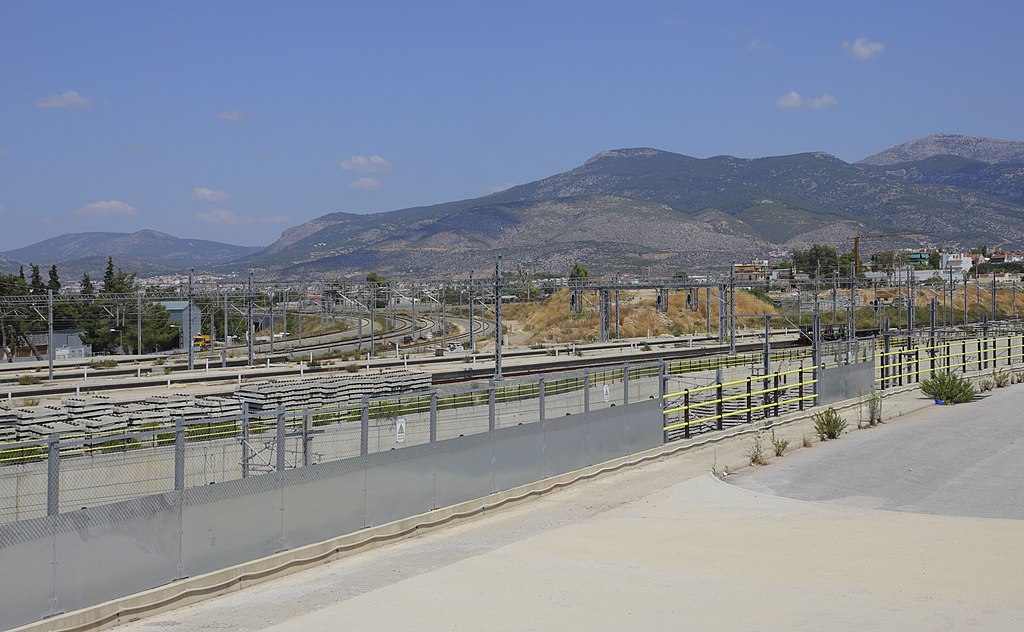
Acharnes, located just north of Athens, is one of the largest suburbs of the Greek capital and a city with deep roots in antiquity. Known as Menidi in earlier times, it has been continuously inhabited since ancient Greece. Historically, Acharnes played a significant role in supplying Athens with agricultural products and military support. Today, it is a bustling urban area with a mix of residential neighborhoods, markets, and cultural centers. Its proximity to Athens makes it well connected to the capital while maintaining its own identity. The city is also notable for its efforts to preserve folklore and traditions through cultural associations and festivals. With Mount Parnitha nearby, residents and visitors enjoy easy access to hiking and natural retreats while remaining close to the energy of the Athens metropolitan area.
Interesting Fact:
Acharnes is mentioned in Aristophanes’ play “The Acharnians,” one of the earliest Greek comedies.
7. Volos (Population: 85,806)
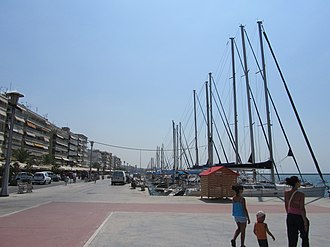
Volos, a coastal city in Thessaly, is famous for its stunning setting between Mount Pelion and the Pagasetic Gulf. It is a modern industrial and commercial hub, while also being deeply tied to Greek mythology as the supposed departure point of Jason and the Argonauts. The city’s waterfront is lively, with cafes and the traditional “tsipouradika” taverns, where locals enjoy meze with tsipouro. Volos also has strong cultural offerings, including the Archaeological Museum of Volos and the Athanasakeion Museum. The city’s proximity to picturesque Pelion villages and pristine beaches makes it a major tourist destination. Volos blends mythology, culture, and natural beauty, providing both an industrial backbone and a gateway to Greece’s legendary landscapes. It stands out as a vibrant city where ancient stories and modern lifestyles meet.
Interesting Fact:
Volos is linked to the myth of Jason’s quest for the Golden Fleece.
8. Ioannina (Population: 64,897)
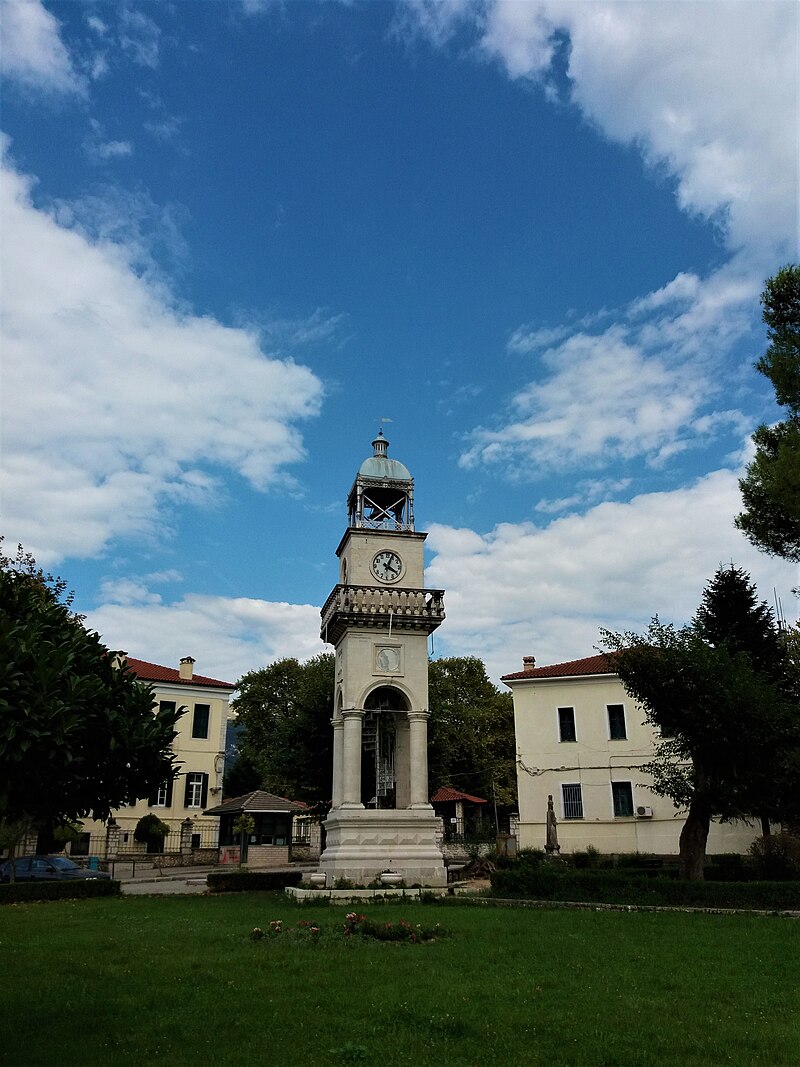
Ioannina, capital of the Epirus region, is a city that uniquely combines natural beauty and rich cultural heritage. Set on the shores of Lake Pamvotis, it is renowned for its medieval old town and impressive Ioannina Castle, one of Greece’s oldest Byzantine fortresses still in use. The city flourished during Ottoman rule and became a center of learning and commerce. Today, Ioannina remains a vibrant university city, infused with youthful energy and creativity. Traditional silverwork, a craft the city is famous for, can still be found in local shops. The serene island in Lake Pamvotis, accessible only by boat, houses monasteries and museums that offer a glimpse into Byzantine and Ottoman life. With its lakeside charm and diverse history, Ioannina is both picturesque and deeply meaningful in Greek history.
Interesting Fact:
Ioannina is the only city in Greece with an inhabited island in its lake.
9. Chalcis (Population: 64,491)
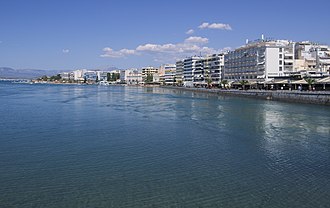
Chalcis, located on the island of Euboea, is a historic city that connects the island to mainland Greece via a narrow strait and bridge. Its strategic position made it important since antiquity, and it was a prominent trade hub for centuries. The city’s most unique feature is the Evripos Strait, where tidal currents change direction multiple times daily, a natural phenomenon that fascinated Aristotle. Chalcis offers a lively seafront filled with tavernas, shops, and promenades, making it a popular spot for Athenians seeking a weekend getaway. It also preserves remnants of Venetian, Ottoman, and Byzantine influence, blending its layered past with modern Greek life. Chalcis continues to serve as a vibrant commercial and cultural center for the island and mainland alike.
Interesting Fact:
The Evripos Strait near Chalcis changes tidal direction up to 12 times a day.
10. Trikala (Population: 61,607)
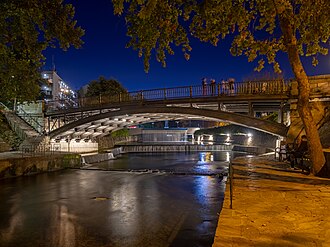
Trikala, located in central Greece, is often celebrated as one of the country’s most innovative and livable cities. Known for its cycling-friendly streets, smart city initiatives, and emphasis on sustainability, Trikala has earned recognition as a model of urban modernization in Greece. The city also has a rich past, being the birthplace of the physician Asclepius, the ancient god of healing. Landmarks include the Byzantine Fortress, Ottoman-era mosques, and the stone Koursoum Mosque. Its riverside cafes and lively neighborhoods give it a relaxed yet dynamic atmosphere. The nearby Meteora monasteries and mountains add to its appeal, making Trikala a hub for both cultural exploration and outdoor adventure. The city’s balance between tradition and innovation has made it a standout in modern Greece.
Interesting Fact:
Trikala is considered Greece’s first “smart city” due to its digital innovation projects.
11. Alexandroupoli (Population: 59,476)
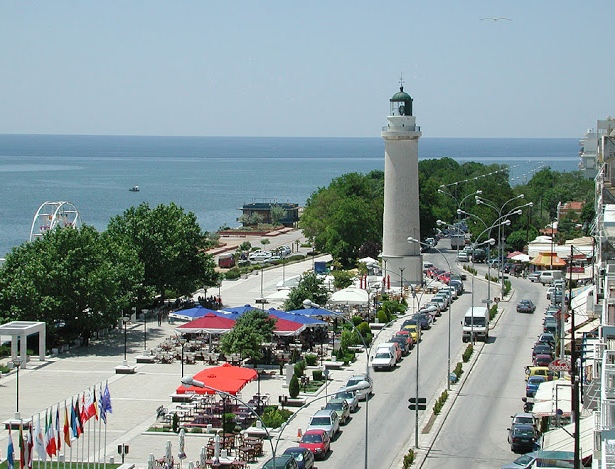
Alexandroupoli, located in northeastern Greece near the Turkish border, is a city that has grown rapidly from a small fishing village in the 19th century into a vital port and transportation hub. Its iconic lighthouse dominates the seafront and serves as a symbol of the city. Alexandroupoli’s position makes it a strategic crossroads for trade and travel between Europe and Asia. The city has a youthful vibe, thanks to its university, and offers visitors modern cafes, shops, and a welcoming seaside promenade. It is also a gateway to natural wonders like the Evros Delta and Dadia Forest, both rich in biodiversity. Alexandroupoli reflects Greece’s modern development while retaining a friendly, approachable character for residents and visitors alike.
Interesting Fact:
Alexandroupoli’s lighthouse, built in 1880, is one of the tallest in the Mediterranean at 27 meters.
12. Xanthi (Population: 58,749)
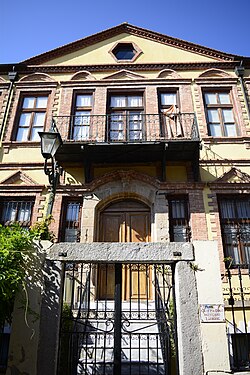
Xanthi, nestled at the foot of the Rhodope Mountains, is a city known for its multicultural history and vibrant traditions. Its old town preserves Ottoman-era mansions, cobbled streets, and neoclassical architecture that reflect its diverse past. The city is famous for its annual carnival, one of the largest in northern Greece, attracting visitors with parades, music, and dancing. Xanthi also celebrates its multicultural roots, as it is home to both Christian and Muslim communities, enriching its cultural life. The surrounding region is rich in natural beauty, offering opportunities for hiking and exploring the scenic Nestos River. With its lively student population and dynamic cultural events, Xanthi combines tradition, diversity, and modernity into a distinctive Greek city experience.
Interesting Fact:
Xanthi’s carnival is one of Greece’s largest, blending ancient rituals with modern celebrations.
13. Serres (Population: 58,398)
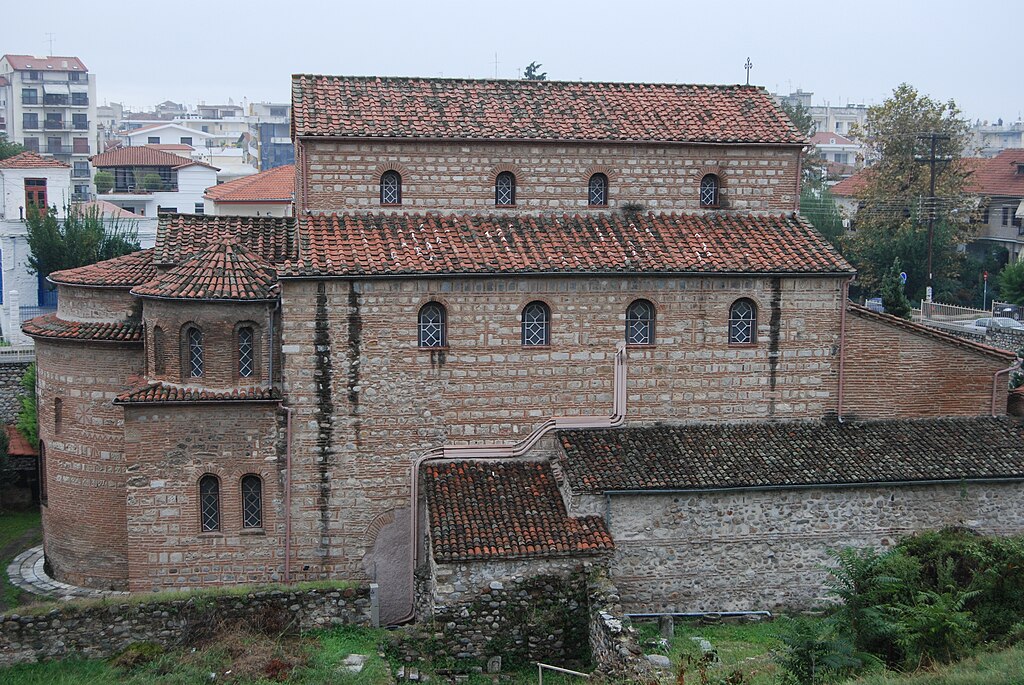
Serres, located in northern Greece, is a city with deep historical roots dating back to antiquity. The ruins of the ancient city, Byzantine walls, and Ottoman influences highlight its layered past. Today, Serres is a thriving regional center known for its agricultural economy and vibrant cultural life. The city is also home to the Serres Archaeological Museum, showcasing finds from the region’s rich history. Its lively squares, markets, and local festivals give the city a warm and welcoming atmosphere. Surrounded by fertile plains and close to Lake Kerkini, a major bird-watching site, Serres combines cultural heritage with natural beauty. It remains an important link in Greece’s northern regions, balancing its past with contemporary growth.
Interesting Fact:
The nearby Lake Kerkini is home to over 300 species of birds, making it a top birding destination.
14. Kalamata (Population: 57,706)
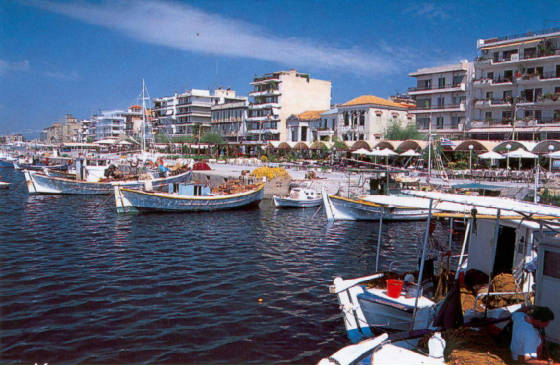
Kalamata, situated in the Peloponnese, is famous worldwide for its olives and olive oil. The city is framed by the Taygetos Mountains and the Messinian Gulf, offering breathtaking natural beauty. Its historic castle, old town, and Byzantine churches reflect its rich cultural past. Kalamata is also a hub of arts and culture, hosting the annual Kalamata International Dance Festival. Visitors enjoy strolling along the seaside promenade, exploring lively markets, and sampling local delicacies. Beyond its cultural offerings, Kalamata serves as a gateway to the Mani Peninsula, ancient Messene, and pristine beaches. It blends tradition with modern living, making it both a charming tourist destination and a vibrant city for residents.
Interesting Fact:
Kalamata is the birthplace of the world-renowned Kalamata olive.
15. Katerini (Population: 56,961)
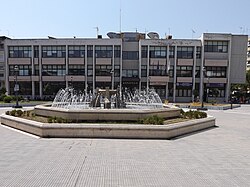
Katerini, located at the base of Mount Olympus and near the Aegean Sea, enjoys a stunning natural setting that defines much of its appeal. The city is a popular base for travelers exploring Olympus, the legendary home of the Greek gods, and nearby seaside resorts. Katerini itself is a lively urban center with bustling markets, cafes, and a strong local community spirit. It thrives as both a commercial hub and a tourist destination, balancing local traditions with modern conveniences. The city’s location allows easy access to archaeological sites, mountain trails, and sandy beaches, making it uniquely versatile for visitors. Katerini embodies Greece’s blend of myth, nature, and contemporary life, offering a welcoming atmosphere to all who visit.
Interesting Fact:
Katerini lies just 6 kilometers from Mount Olympus, Greece’s highest peak.
16. Rhodes (Population: 54,562)
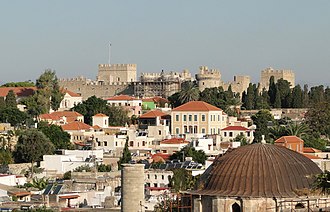
Rhodes, the largest of the Dodecanese islands, is one of Greece’s most famous destinations, blending history, culture, and stunning landscapes. The medieval Old Town, a UNESCO World Heritage site, features stone walls, cobbled streets, and the Palace of the Grand Master, reflecting its time as the seat of the Knights Hospitaller. Beyond its rich history, Rhodes is also a bustling modern city with shops, restaurants, and a lively nightlife. The island’s beautiful beaches, such as Faliraki and Lindos, attract visitors from around the world. Rhodes has long been a crossroads of civilizations, with Greek, Ottoman, and Italian influences still evident in its architecture and culture. Its blend of ancient heritage and modern resort life makes it both historically fascinating and a top tourist destination in the Mediterranean.
Interesting Fact:
Rhodes was once home to the Colossus of Rhodes, one of the Seven Wonders of the Ancient World.
17. Chania (Population: 54,558)
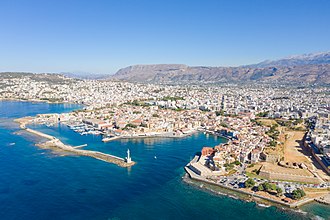
Chania, located on the northwest coast of Crete, is widely considered one of Greece’s most beautiful cities. Its Venetian harbor, lighthouse, and old town with narrow alleys and colorful buildings create a romantic and historic atmosphere. Chania reflects the layered history of Crete, with influences from the Minoans, Venetians, Ottomans, and modern Greeks. The city’s bustling markets, seaside tavernas, and cultural events make it vibrant year-round. Surrounding Chania are some of Crete’s most breathtaking beaches, including Balos and Elafonissi, and the Samaria Gorge, one of Europe’s great hiking experiences. Chania seamlessly combines ancient charm with modern living, serving as both a tourist hub and a cultural heart of Crete.
Interesting Fact:
Chania’s lighthouse, originally built by the Venetians in the 16th century, is one of the oldest in the world.
18. Kavala (Population: 51,948)
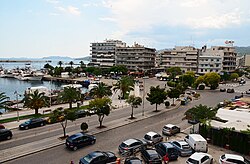
Kavala, located in northern Greece along the Aegean coast, is a city with striking amphitheatrical views of the sea and harbor. Known historically as Neapolis, it was a significant Roman port and later thrived under Byzantine and Ottoman rule. Kavala is often called the “Mecca of Tobacco” due to its role as a major tobacco-processing city in the 19th and 20th centuries. The city features the impressive Kamares aqueduct, Ottoman-era mansions, and the fortress that overlooks the sea. Today, Kavala combines its industrial heritage with tourism, offering seaside promenades, cultural festivals, and access to nearby islands like Thasos. Its blend of history, commerce, and natural beauty makes Kavala a distinctive city in Greece’s north.
Interesting Fact:
The Apostle Paul first landed in Europe at Kavala (then Neapolis) during his missionary journeys.
19. Komotini (Population: 51,733)
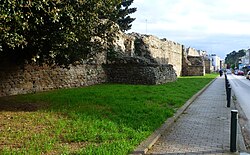
Komotini, the capital of Western Thrace, is a city notable for its multicultural character. With both Christian and Muslim communities coexisting, it reflects centuries of diverse influences. Historically an Ottoman administrative center, Komotini retains mosques, Byzantine churches, and modern Greek institutions. Today, the city thrives as a university hub, giving it a youthful energy and dynamic cultural life. Its markets, squares, and local festivals celebrate this diversity, and the city is surrounded by fertile plains that sustain its economy. Komotini’s unique position near Greece’s borders with Bulgaria and Turkey makes it an important crossroads of cultures, commerce, and traditions.
Interesting Fact:
Komotini hosts the Democritus University of Thrace, one of Greece’s largest universities.
20. Agrinio (Population: 48,923)
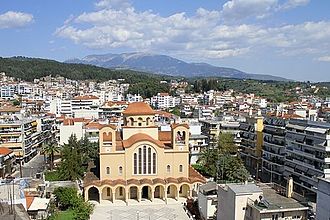
Agrinio, located in western Greece, is a city known for its agricultural and industrial contributions. It rose to prominence in the 19th and 20th centuries as a major center for tobacco production, shaping much of its modern identity. The city has lively squares, cultural venues, and museums that reflect its growth and development. Surrounded by fertile plains and near Lake Trichonida, Greece’s largest lake, Agrinio offers natural beauty alongside urban life. Its population is vibrant and welcoming, with traditions rooted in both rural life and modern progress. Today, Agrinio stands as a blend of history, agriculture, and urban development in the Aetolia-Acarnania region.
Interesting Fact:
Agrinio was once one of Greece’s largest centers for tobacco cultivation and trade.
21. Lamia (Population: 47,532)
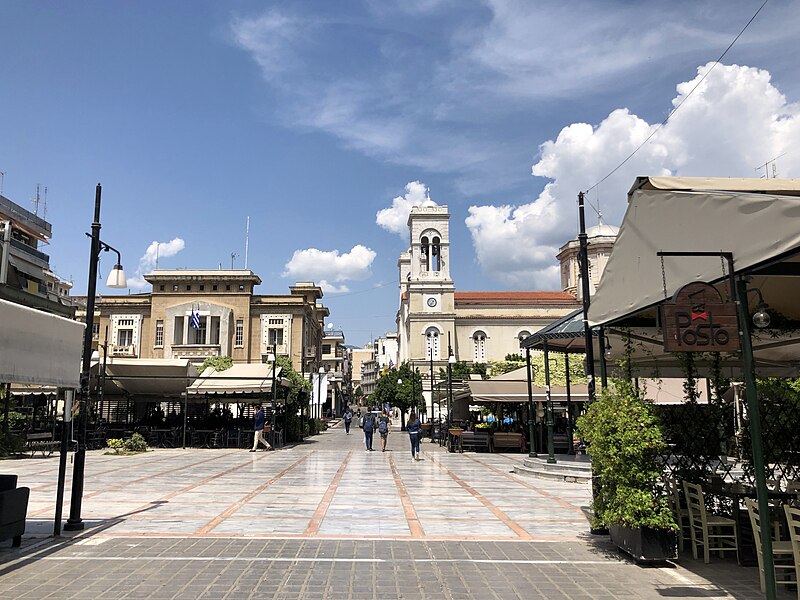
Lamia, located in central Greece, has been an important city since ancient times, controlling the route between northern and southern Greece. Its castle, perched on a hill overlooking the modern city, has Byzantine, Frankish, and Ottoman layers, symbolizing its long strategic role. Today, Lamia is a lively urban center with modern amenities, shops, and public squares. It also serves as a gateway to the nearby Thermopylae battlefield, where Leonidas and his Spartans made their famous stand. The surrounding region is rich in history and natural beauty, making Lamia both a practical modern city and a link to Greece’s legendary past.
Interesting Fact:
The city is named after Lamia, a figure from Greek mythology associated with tragedy and revenge.
22. Drama (Population: 43,447)
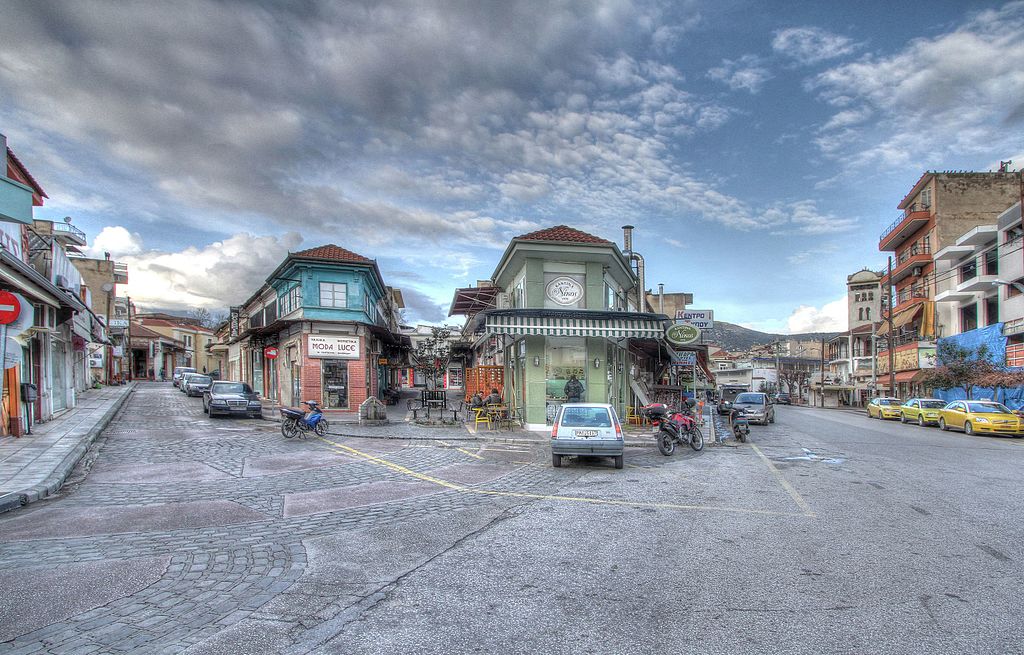
Drama, situated in northern Greece, is known for its natural beauty and cultural life. Surrounded by mountains and forests, it is a gateway to outdoor adventures and eco-tourism. Drama has a long history of viticulture and is today famous for its local wines. The city also hosts the annual Drama Short Film Festival, a leading event in Greek cinema. Drama’s squares, markets, and cultural venues give it a welcoming and lively feel. It balances its role as an agricultural and cultural hub while serving as a base for exploring Macedonia’s scenic landscapes and historical sites.
Interesting Fact:
Drama is renowned for its vineyards and is one of Greece’s premier wine-producing regions.
23. Veria (Population: 42,510)
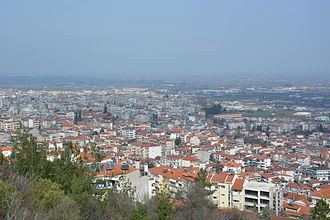
Veria, located in northern Greece, is a city with deep historical and religious significance. Known as Beroea in antiquity, it was visited by the Apostle Paul, making it an important site for Christian heritage. The city preserves Byzantine churches, Ottoman-era buildings, and a charming old quarter with traditional houses. Today, Veria is a modern city that celebrates its layered past while serving as a regional center. Its proximity to Vergina, where the tomb of Philip II of Macedon was discovered, enhances its historical importance. Veria blends modern life with ancient history, making it a unique destination for visitors interested in Greece’s heritage.
Interesting Fact:
The Apostle Paul preached in Veria, and the city still honors this legacy with a monument.
24. Kozani (Population: 42,139)
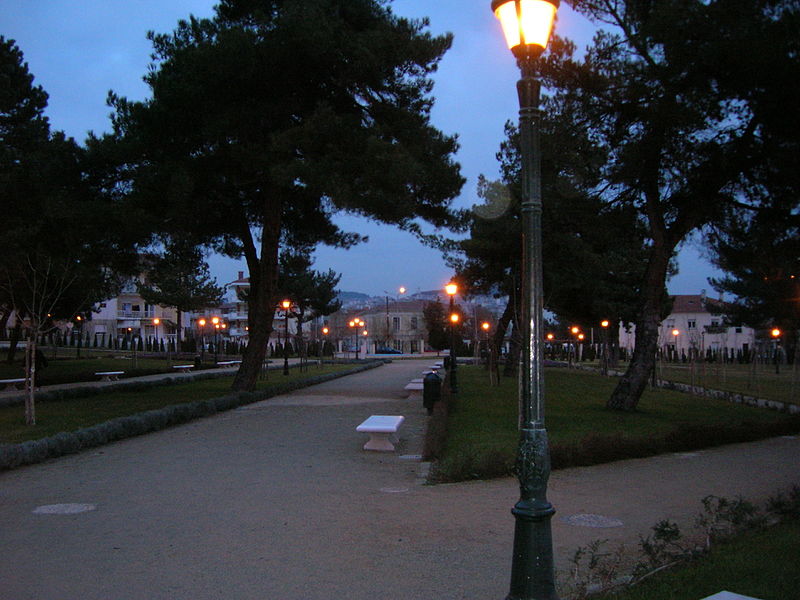
Kozani, situated in northern Greece, is a city known for its cultural traditions and energy industry. Historically, Kozani thrived as a trading and educational center, and it remains home to impressive libraries and museums. The city is also famous for its production of saffron, one of the world’s most valuable spices. Kozani serves as an important energy hub for Greece due to its nearby lignite mines and power plants. Its lively Carnival and cultural events highlight its community spirit. Kozani represents a mix of economic importance, cultural richness, and traditional pride in northern Greece.
Interesting Fact:
Kozani is one of Europe’s largest producers of saffron, known locally as “Krokos Kozanis.”
25. Karditsa (Population: 38,996)

Karditsa, located in central Greece’s Thessaly region, is a city that blends agricultural strength with modern urban life. Surrounded by fertile plains, it is one of Greece’s leading agricultural centers. Karditsa is also notable for its cycling culture, with bike paths making it one of the most bicycle-friendly cities in the country. The nearby Plastiras Lake offers outdoor recreation and scenic beauty, attracting visitors from across Greece. Karditsa has a strong sense of community, with lively markets, festivals, and local traditions continuing to thrive. It serves as a practical yet welcoming city in the heart of Thessaly.
Interesting Fact:
Karditsa is regarded as the most bicycle-friendly city in Greece.




